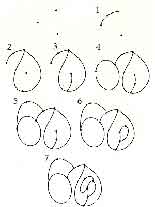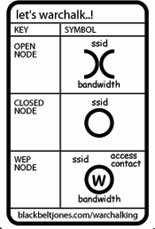 The
The
game of sprouts is a two-person game invented by John Conway and Michael Paterson in 1967 (for some
historical comments visit the encyclopedia). You just need pen and paper to
play it. Here are the rules : Two players, Left and Right, alternate
moves until no more moves are possible. In the normal game, the last
person to move is the winner. In misere play, the last person to move is
the loser. The starting position is some number of small circles called
“spots”. A move consists of drawing a new spot g and then drawing two
lines, in the loose sense, each terminating at one end at spot g and at
the other end at some other spot. (The two lines can go to different
spots or the same spot, subject to the following conditions.) The lines
drawn cannot touch or cross any line or spot along the way. Also, no
more than three lines can terminate at any spot. A spot with three lines
attached is said to be “dead”, since it cannot facilitate any further
action.
You can play sprouts online using this Java applet.
There is also an ongoing discussion about sprouts on the geometry math forum. Probably the most complete
information can be found at the world game
of sprouts association. The analysis of the game involves some nice
topology (the Euler number) and as the options for Left and Right are
the same at each position it is an impartial game and the outcome
depends on counting arguments. There is also a (joke) variation on the
game called Brussels sprouts (although some people seem to miss the point
entirely).
Some years ago I invented some variations
on sprouts making it into a partizan game (that is, at a given
position, Left and Right have different legal moves). Here are the rules
:
Cold Antwerp Sprouts : We start with n White
dots. Left is allowed to connect two White dots or a White and bLue dot
or two bLue dots and must draw an additional Red dot on the connecting
line. Right is allowed to connect two White dots, a Red and a White dot
or two Red dots and must draw an additional bLue dot on the connecting
line.
Hot Antwerp Sprouts : We start with n
White dots. Left is allowed to connect two White dots or a White and
bLue dot or two bLue dots and must draw an additional bLue dot on the
connecting line. Right is allowed to connect two White dots, a Red and a
White dot or two Red dots and must draw an additional Red dot on the
connecting line.
Although the rules look pretty
similar, the analysis of these two games in entirely different. On
february 11th I’ll give a talk on this as an example in
Combinatorial Game Theory. I will show that Cold Antwerp Sprouts
is very similar to the game of COL, whereas Hot Antwerp Sprouts resembles SNORT.

